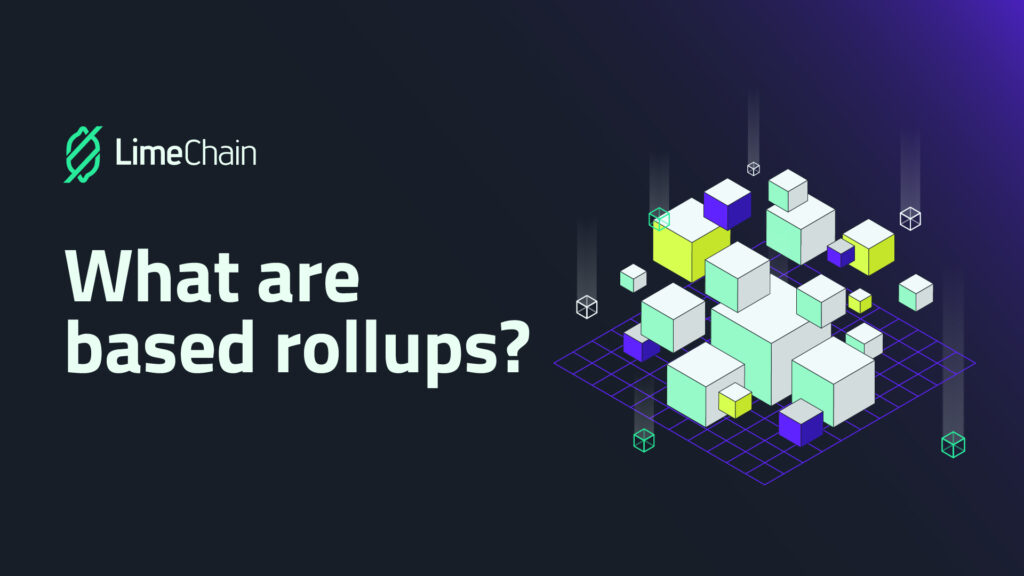

Rollups are one of the hottest Web3 technology fields and by far the most promising option for solving the problem of blockchain scalability. At the same time, it is still a developing technology and Web3 developers are still figuring out how it can be improved.
Based rollups are the latest interpretation of that concept, but they are not in direct competition with optimistic and ZK rollups. Whereas optimistic and ZK rollups take different approaches to validating state, based rollups are defined by the way they deal with sequencing. While a traditional rollup, be it an optimistic or a zero-knowledge one – uses its own sequencer, a ‘based’ rollup utilizes its base Layer 1 protocol for the same purpose.
What is sequencing?
While the term sequencing is largely associated with rollups, it describes a process that’s integral to the broader Web3 ecosystem. Essentially, sequencing is the process of ordering transactions within a chain. The process is just as integral to Layer 1s, as is to L2’s, but the sequencer designs may vary greatly depending on the type of the network. For example, a big L1 network is likely to have a much more decentralized approach to sequencing, while a rollup protocol may be limited to using a centralized sequencer.
A based rollup seeks to tap into the advantages that L1 sequencing can bring to address some of the limitations of the standard rollup design.
How do based rollups work?
The model employed by based rollups is quite simple and straightforward. Under this model, L1 block proposers take on sequencing duties for the rollup. Working together with L1 searchers and block builders, the proposer can include the next rollup block in the next Layer 1 block.
Giving up sequencing duties to Layer 1 has a number of advantages, as well as some downsides. Let’s have a closer look.
Advantages of based rollups
Based rollups use L1 sequencing mainly to improve aspects of the standard rollup designs that may be lacking. Here are some of the main advantages that they inherit from Layer 1.
Liveness
Compared to a big Layer 1 protocol like Ethereum (which is practically the base L1 to most major rollups), the scale and scope of a rollup is quite small. Naturally, this means that there is a higher risk of a sequencer or validator failure, which may result in the user having their assets frozen. For that reason, most rollups develop mechanisms such as escape hatches, which are designed to counter such scenarios.
Using L1 sequencing allows based rollups to inherit the liveness of their base L1s, which practically eliminates the risk of sequencer or validator failure.
Decentralization
Through L1 sequencing based rollups are able to inherit the level of decentralization of their base Layer 1’s and take advantage of already existing infrastructure that incentivizes L1 actors to add blocks to the chain. L1 sequencing is probably the simplest way to have a decentralized sequencer in a rollup.
Simplicity
Speaking of simplicity, a based rollup is simpler than even a centralized rollup sequencer. We already mentioned that you do not need to build escape hatches and other similar mechanisms. You also do not need to verify sequencer signatures or have external Proof-of-Stake consensus.
Cost efficiency
Simplicity also translates to lower costs, as no sequencer signature verifications means zero gas overhead. Furthermore, based rollups can shave off development costs associated with building escape hatches and other complex infrastructure.
Sovereignty
Delegating sequencing duties does not mean that the rollup has to also cede its sovereignty to the L1. The network can still have its own governance token, collect base fees and have full control over how those proceeds are being spent.
Disadvantages of based rollups
The based rollup model also has certain limitations. Chief among them is perhaps the lack of MEV income for the rollup. Maximal extractable value, or MEV, is the value that can be extracted on top of the base fees by sequencing transactions in a certain way (depending on the particular MEV opportunity). You can read more about MEV in our detailed piece on the subject. Since based rollups rely on Layer 1 for sequencing, the MEV, naturally, is funneled to the L1.
Keep in mind that this means that based rollups have a strong economic alignment to their base L1’s, which can be an advantage. Lucrative MEV opportunities are what keeps L1 proposers, searchers and builders to include rollup belongs in the Layer 1 chain.
Another downside of the based rollup model is that networks of that type have reduced sequencing flexibility and have limited ability to introduce their own sequencing models.
Conclusion
Based rollups are another example of the considerable R&D effort that is being dedicated to improving and enhancing Layer 2 scalability. By leveraging already existing L1 infrastructure, the based rollup model is seeking to improve the utility of rollups and make them work even better as scaling solutions for the growing Web3 ecosystem.